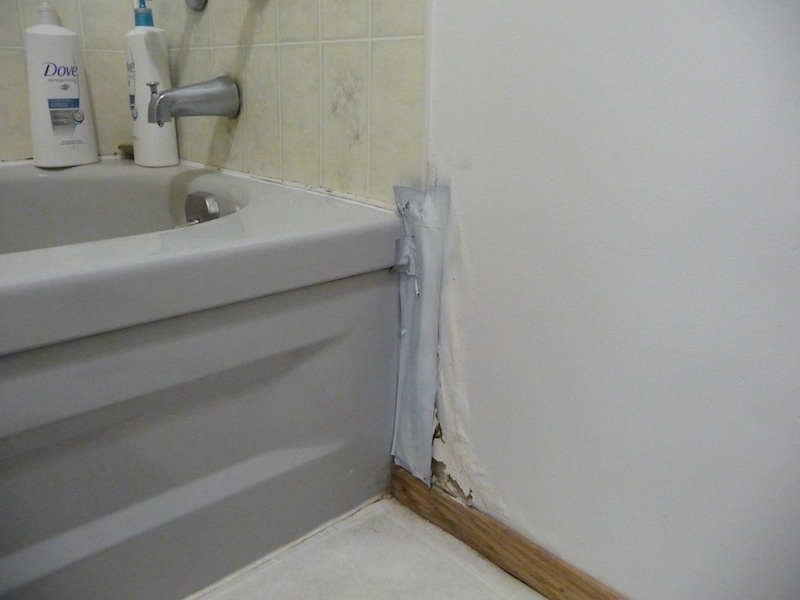How do you actually feel when it comes to Preventing Water Damage in the Bathroom?

The washroom is incredibly prone for moist build-up and prospective water damages because of the constant use of water in it. This post offers basic inspection methods to aid discovering water damages risks.
The constant use of water in the washroom makes it incredibly prone for moist build-up and also potential water damages. By inspecting it on a regular basis, you can reduce water associated problems.
The following collection of inspections is easy to carry out and also must be done once in every three months in order to maintain your bathroom in good shape and also to prevent prospective water problems brought on by the bathtub, the shower, pipeline joints and also plumbing, sinks, cabinets, as well as the commode
Do not neglect performing these assessments as well as be detailed while performing them. Bear in mind that these straightforward inspections can save you a great deal of cash by providing early indicators for water damages
Bath tub and also Shower
The shower and bathtub need unique focus and also maintenance. Check the ceramic tiles as well as change if fractured. Make sure that there is no missing grout between the ceramic tiles. Check and also change fractured caulking at joints where the walls meet the floor or the bathtub. Blocked drains as well as pipelines troubles will certainly protect against the bath tub from drying and also might show serious problems beneath the bathtub. Speak with an expert right away to avoid architectural damage. Focus on discolorations or soft areas around the bathtub walls as they may indicate an interior leakage.
Plumbing
Signs for water damage are difficult to discover considering that a lot of pipes are set up inside the wall surfaces.
Pay special attention to flooring and also wall surfaces dampness as well as spots as they may indicate an undetectable plumbing issue. Inspect moisture degrees in adjacent areas also.
Sinks and Cabinets
Sinks and closets are subjected to wetness and moisture everyday and are frequently overlooked. Inspect consistently under the sink as well as on the countertop above it. Fix any type of drip in the trap as it might recommend drain troubles. Browse the sink, sluggish draining pipes might suggest a blocked drainpipe. Change sink seals if they are broken or loosened.
The Bathroom
The toilet is an at risk water joint. Inspect the water lines and also search for leakages around the bathroom seat, in the hose, and also under the water container. If you identify any kind of indications of moisture on the flooring around the bathroom, check for leakages in the toilet rim and container seals.
Understand that hanging toilet dish antiperspirants enhances the chances for obstructions.
Water Damage Signs In The Bathroom To Avoid Cleanup
Musty smell
This is one of the easiest signs to catch because musty smells are so odorous. The damp, earthy, moldy smell should be a big red flag. The smell will develop when moisture gets trapped in surfaces, and begins to facilitate mold growth. Leaking pipes under cabinets, inside walls, and behind shower fixtures will cause moisture to stay trapped and not dry, which will lead to mold growth and spread. As soon as you notice any musty smells in your bathroom, have it checked for hidden water damage and cleanup signs.
Visible mold
If the smell isn’t there to give it away, sometimes you will actually see mold growth. Finding mold in your bathroom is a serious problem, because mold is very harmful to your health. By the time mold growth is visible, it also means that water damage has already occurred and been present for some time. The only way the mold problem can be resolved is to find the source of the moisture and get it stopped. To safely and adequately remove mold, you need to have professionals handle the remediation. Do not waste any time in getting mold problems addressed, fixed, and sanitized so that you can protect you and your family from the many respiratory symptoms caused by mold exposure.
Damaged floors
Bathroom floors should be able to withstand some exposure to water while still remaining in good condition. However, when excess exposure or water leaks occur, they will begin to damage even the most water-resistant flooring. If you notice any cracking, bubbling, staining, or warping on your bathroom floors, there is probably a water leak somewhere causing the distortion. If you notice areas of the floor have become softer, or even have a spongy feeling, there is probably damage to the subfloor. Subflooring is typically made up of plywood. When plywood is exposed to water or moisture, it will absorb it. Once it has become saturated, the weight of the excess water will cause the wood to swell and soften. Check the floors in your bathroom frequently to catch any of these sings before they lead to damaged subflooring.
Changes on walls
When water leaks behind walls, it will cause changes in the drywall. Peeling plaster, blistering paint, and soggy wallpaper are all good indicators that excess water is building up behind the wall. Water leaking behind drywall will cause it to swell and be soft to the tough. If you start to notice gaps along the trim of your walls, or where tile meets the wall, it could also be a strong indicator that there is a leak behind the wall. Any changes, distortion, or damage on the walls should be evaluated as soon as you notice it to prevent further water damage and cleanup.

I'm very excited about How to Fix a Water Damage Bathroom and I'm hoping you appreciated the page. Sharing is good. Helping others is fun. I appreciate reading our article about Preventing Water Damage in the Bathroom.
Automated Marketing